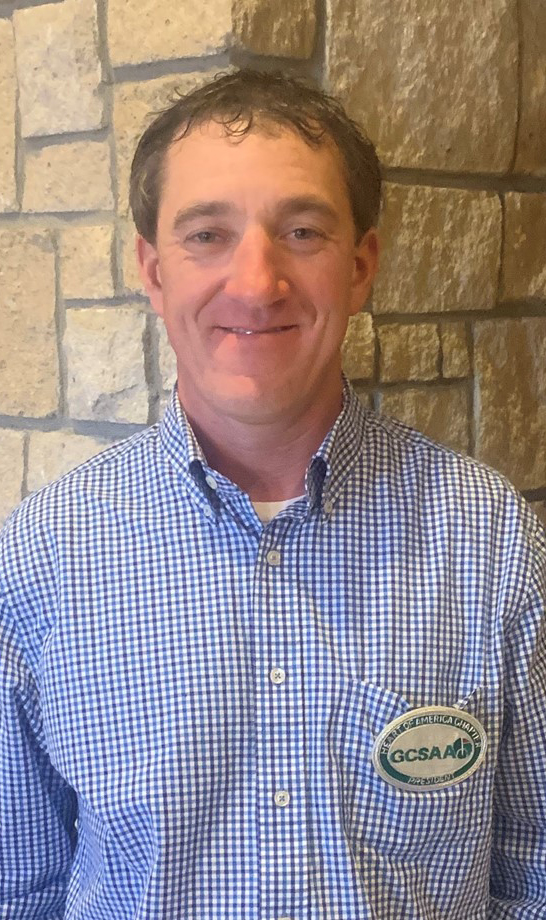2018 SOI: Q&A with HAGCSA’s Ethan Shamet

Ethan Shamet
Ethan Shamet
President, Heart of America Golf Course Superintendents Association
Class A Superintendent, Prairie Highlands Golf Course
Olathe, Kan.
1.) Generally speaking, how was the golf season this year?
It was a strange one this year. The winter was cold and dry, March was warm, April was cold… and then boom — summer was here and no rain. And then fall lasted a few weeks before winter came early!
We had many rounds because we didn’t have any rainy days from April to September. During the normal golfing months (from May to October), we had full tee times from 7 a.m. until dark. So, as far as golfing goes (and rounds), we did a great job this year.
2.) How did the weather treat you this season?
This year was one of the worst for weather conditions that I can remember. We started out with a cold, dry winter, as we were hand watering greens in March. Then we had the coldest April on record, followed by the second hottest May on record, as temperatures remained between 80 and 90 degrees until early September.
My course also experienced a huge drought compared to others down the street. At one time, a course 13 miles east of me had 12 more inches of rain from January to September. For some reason, each rain storm would either start to the east of us or just split around us. It was a long and tiresome summer!
During the late summer months, I was scared the ponds might go dry so we just watered greens and tees. The rough was mostly brown and the fairways were rolling 50 yards longer, yet the greens survived, so that’s what really matters.
Finally, during the first week of October, we had a 12.6-inch rainstorm for roughly five days, which raised our total from 13.1 to 25.7 inches. In fact, we almost had as much rain in one week as we did all year. A couple weeks after the rain, the newly seeded areas germinated and the rough became green again, as I had recently reseeded it.
I was ready for 2018 to be over by July 4th. I was glad to see some snow here in early November, as it slowed us down on getting things done on the course. The crew and I were ready for it to end.
3.) How would you describe the disease pressure this year, and what diseases were most prevalent?
Although I didn’t see much disease pressure this year due to the dry conditions, we did have a lot of summer weeds pop up all over. Goosegrass was the main one this year — it was really prevalent on greens, collars and even in the Zoysia fairways.
4.) What was the biggest challenge your area had to deal with this year?
The drought! Many courses struggled to keep grass alive and ensure ponds had enough water to irrigate. Also, the courses with city water had to cut back due to the cost of irrigating.
Another challenge was informing the golfers about the drought conditions. If the course down the street had rain and was green, but yours didn’t and was brown, customers couldn’t understand why all the courses didn’t look the same. Even when I would tell them the rain missed us, they just thought we didn’t know how to grow grass anymore.
5.) Are there any success stories from your chapter that stand out in your mind?
Our chapter had our annual Scholarship and Research tournament at Milburn Country Club, and we raised more money than we have in a long time. Despite the hot, dry conditions on all of our courses, we were able to enjoy a great day of golf and raise money for scholarships and research.










